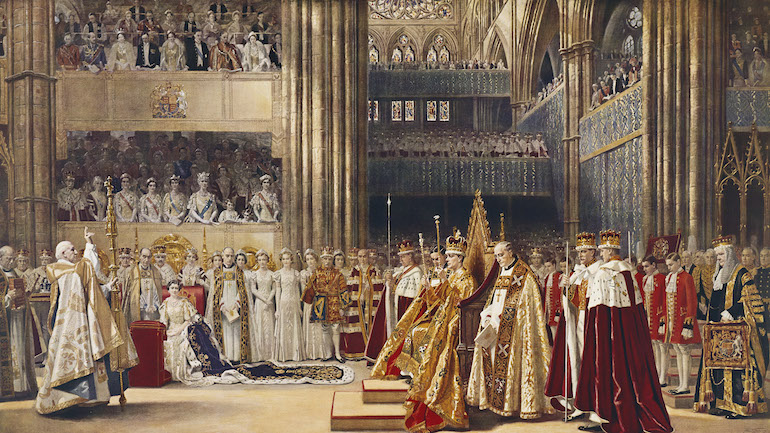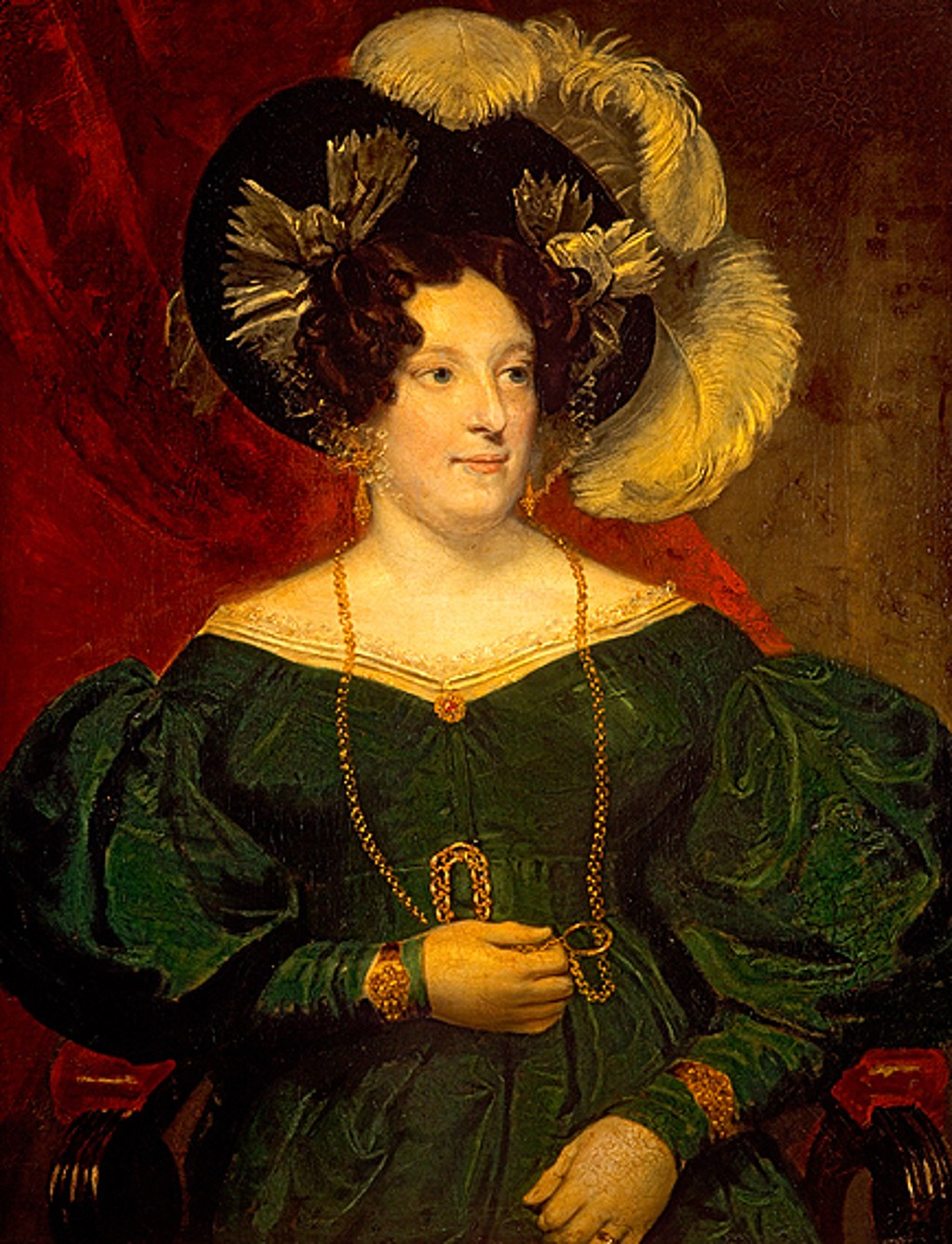
Plans for the coronation of Charles III will combine centuries of tradition with innovations to reflect the new king’s personal preferences and priorities as monarch. Celebrating ancient rites such as the coronation while staying relevant to modern society has been an ongoing challenge for the monarchy, writes Dr Ellie Woodacre, Reader in Renaissance History at the University of Winchester.
At this vital moment in his reign, Charles will both formally affirm his role as monarch and renew the monarchy’s compact with its subjects. Here we reflect on the wider historical context of the event and how plans for the coronation on 6 May are a mix of the old and the new...
Before the event itself begins, there will be a formal procession of the monarch to Westminster Abbey, the cite for the coronation of 39 previous monarchs, going all the way back to the coronation of William the Conqueror on Christmas Day 1066.
One indication of the smaller, more restrained ceremony which the king appears to be aiming for, both to restrain expenditure in a time of economic hardship for many and perhaps in line with the more informal style of the ‘bicycle monarchies’ of many European nations, is that the procession will be truncated. The king’s procession will travel from Buckingham Palace, down The Mall and along Whitehall to Westminster Abbey.
The king and his consort, Queen Camilla, will also travel to the Abbey in the modern Diamond Jubilee coach with air conditioning and more comfortable suspension that the gold state coach. However, they will return from the Abbey in the traditional gold state coach, in use since 1760, which was used by his mother, Elizabeth II at her coronation in 1953.
The coronation route of Elizabeth II was far more extensive, allowing more subjects to line the route by riding up Piccadilly to Hyde Park Corner and on to Marble Arch, coming back down Oxford and Regent Street to Haymarket and down the Victoria Embankment to Westminster Abbey. However, traditionally, coronation processions were much longer, beginning at the Tower of London where the monarch normally stayed for two days prior to the ceremony. The last monarch to begin their coronation ceremony from the Tower was Charles II in 1661.
One aspect of the coronation which has surprised some is the inclusion of the consort, Queen Camilla, in the ceremony. There are two very good reasons why this might not have been expected—first because we have not had a queen consort since the former Queen Mother Elizabeth Bowes-Lyon (tenure as consort 1936-52) and because Elizabeth II’s consort, HRH the Duke of Edinburgh, Prince Philip, did not take part in his wife’s coronation in 1953.
The situation of a male consort is slightly different in terms of tradition. We have only had five male consorts in the English/British monarchy: Philip of Spain (king consort to Mary I, 1554-58), William III (dual monarch with Mary II between 1689-94), George of Denmark (prince consort to Anne, 1702-08), Albert of Saxe-Coburg-Gotha (prince consort to Victoria, 1840-61) and Prince Philip. Out of these, only William III shared a coronation with his wife.
Both Philip of Spain and Prince Albert married their wives after their coronation and Prince George of Denmark did not take part in Queen Anne’s coronation on St George’s Day (23 April) 1702.
However, if a king is married at the time of his accession, queen consorts have normally taken part in the coronation of their husband. In addition, some queen consorts were awarded their own coronation ceremony if they married the king after he had been crowned, like Joan of Navarre who had her own solo coronation at Westminster Abbey in late February 1403 after marrying Henry IV at Winchester earlier the same month.
Yet, not all queen consorts have had a coronation—though Henry VIII is an exceptional situation in many ways regarding queens consort, his reign does offer an example. He shared his 1509 coronation with his first wife, Catherine of Aragon and his second wife, Anne Boleyn had her own coronation 1 June 1533. Henry was particularly keen to underline the position of Anne as his rightful wife and legitimate queen consort after the controversial annulment of his marriage to Catherine of Aragon. Anne was also pregnant, so the ceremony also affirmed the legitimacy of their unborn child, who became Elizabeth I.
However, none of Henry’s remaining wives had a coronation although there were plans for Jane Seymour’s before she died shortly after giving birth to Edward VI in 1537.
On one occasion, the coronation of George IV 19 July 1821, the king’s estranged wife Caroline of Brunswick (pictured below) was not only excluded from participating in the ceremony, she was even refused entrance to Westminster Abbey. This however, was both an exception to tradition and extremely controversial.

While there have been amendments to the coronation rituals to take into account the Reformation and the advent of female sovereigns, like Elizabeth II, in many ways the six key elements of the coronation ceremony reflect the ancient traditions set out in coronation ordo or ordines, what we might call rules or guidelines, in books like the Liber Regalis written in the late 14th century.
The first two parts: recognition and the oath, reflect the monarch’s relationship with their subjects. In the recognition, the monarch is presented to their subject and their right to the throne is confirmed, while in the oath the monarch swears to serve the people and uphold the laws of the land and the Church of England.
The next element—the anointing—is the most sacred part of the ceremony, where the monarch is traditionally hidden from view and marked with holy chrism oil. Here is a perfect example of tradition and modern innovation—while the 12th century coronation spoon will be used for the ritual, the oldest surviving paraphernalia of the ritual, the oil itself has been made without using any animal products such as ambergris or civet musk in a nod to Charles’ environmental ethos and modern preferences regarding animal welfare.
The following two parts are those which we immediately associate with coronation—the investiture with the royal regalia, the crown, orb, coronation ring, rod and sceptre and the enthronement on King Edward’s Chair which has been used in coronations for more than 700 years.
Finally, there is the homage where the Archbishop of Canterbury, members of the royal family and nobility formally swear to serve the monarch—Prince Philip was the first to offer homage at Elizabeth II’s coronation in 1953.
Pictured top: Painting depicting the Coronation of H.M. George VI and Queen Elizabeth. 1937. Photo Credit: © Public Domain via Wikimedia Commons.
Back to media centre